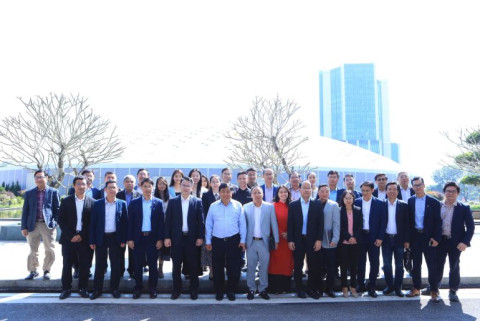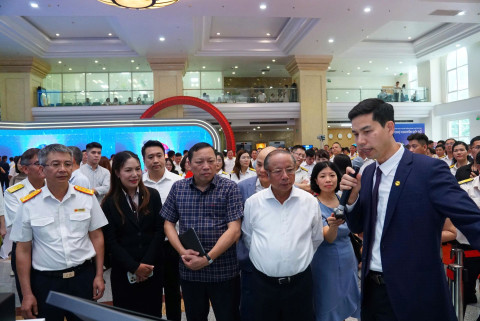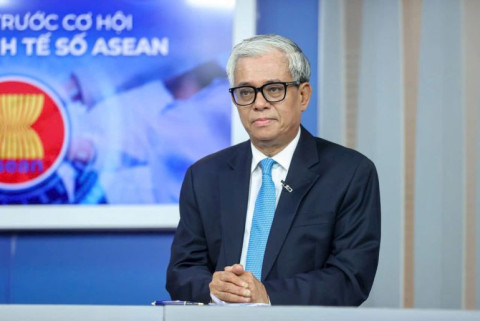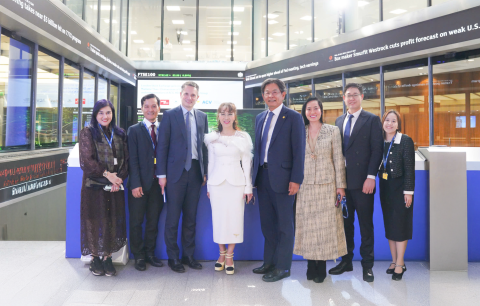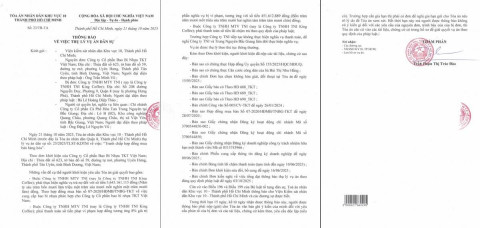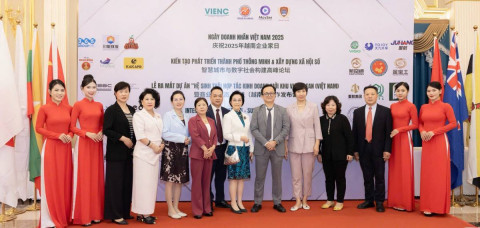Industrial Real Estate Maintains Its Leading Position, Promising Growth in 2024
- 162
- Business
- 19:53 09/01/2024
DNHN - Notwithstanding the economic downturn, the industrial real estate market is still expanding. As a result, rental prices have continued to rise well due to the favourable FDI capital flow and the benefit of prioritised tax policies.
According to statistics, there are currently 412 Industrial Parks (IPs) established nationwide (368 IPs outside of SEZs, 37 IPs in coastal SEZs, and 7 IPs in border-gate SEZs) with a total area of 217.5 thousand hectares.
Specifically, 293 IPs have been put into operation with a total natural land area of approximately 92.2 thousand hectares, and an industrial land area of approximately 63 thousand hectares. Of these, 119 IPs are under construction with a total natural land area of approximately 37.5 thousand hectares, and an industrial land area of approximately 24.7 thousand hectares.
Regarding occupancy rates and rental prices, they continue to grow despite economic challenges. A slight decrease in occupancy rates only occurred locally in a few provinces that recorded many newly available supplies.
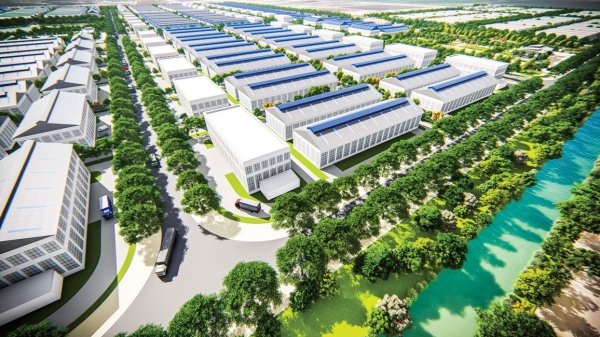
The occupancy rate of IPs in operation is over 70%. Of which, the key provinces in the North reach 80% and the key provinces in the South reach 90%. Rental prices increased by about 20% compared to the previous period, with the Northern region witnessing the strongest price increase.
In the North, the average rental price is 135 USD/m2/rental cycle, an increase of 33% compared to 2022. Bac Ninh recorded the largest price increase, up 40% to 160 USD/m2/rental cycle due to the addition of new quality supply and the interest of high-tech enterprises. Hai Phong increased by 30% to 125 USD/m2/rental cycle.
In the Southern market, the average rental price is 188 USD/m2/rental cycle, an increase of 15% compared to 2022. Rental prices are high, higher than in other countries in the region; risks related to the global minimum tax law, along with institutional, policy “bottlenecks”, and practical issues may be obstacles, reducing the competitive advantage in attracting investors to Vietnam. However, Vietnam still has many driving forces to help the industrial real estate market promise to flourish in 2024.
FDI capital flow remains positive with the advantage of preferential tax policies. Transport infrastructure is increasingly synchronous and modern with a commitment to infrastructure investment among the top in the region. IP ancillary services are increasingly being improved.
Many new IP investment projects have been approved in principle and have begun implementing the next phases. The supply of Industrial real estate is witnessing growth in both the North and the South.
The demand for industrial real estate is still very large, especially the demand for multi-purpose multi-storey warehouses and ready-built factories.
According to experts, demand is being boosted in both quality and quantity with a series of investment plans and agreements from foreign enterprises, choosing Vietnam as a destination in the supply chain transformation trend and the expectation of increased cooperation from active diplomatic activities, especially the recently established new Vietnam - US strategic relationship.
The planning of many provinces/cities for the period 2021-2030 has been approved, which will partly resolve the problems related to legal procedures for IPs.
The Vietnam Real Estate Brokers Association stated that the Ho Chi Minh City and Binh Duong markets did not record any price fluctuations because the existing IPs have all been filled with long-term rental cycles. Long An has an average rental price increase of about 12%, ranging from 140 - 300 USD/m2/rental cycle. The average rental price in Dong Nai increased by 20% year-on-year, ranging from 120-240 USD/m2, while in Ba Ria-Vung Tau, the average rental price was 130 USD/m2/rental cycle, an increase of 30% year-on-year.
According to the Vietnam Real Estate Brokers Association, IPs and SEZs have attracted over 10,400 domestic investment projects and over 11,200 valid FDI projects, with a total registered investment capital of over 2.54 million billion VND and 231 billion USD, respectively. FDI capital in IPs and SEZs accounts for about 35 - 40% of the total newly registered FDI capital of the whole country in recent years.
The proportion of investment capital realized in IPs and SEZs in the total social investment capital is approximately 30%. Promoting local infrastructure and economy. Creating the premise for the development of many supporting industries, creating opportunities for the development of residential real estate, and rental housing.
Although it has been significantly affected by the economic downturn and political fluctuations in the world. However, with the great efforts and determination of the State management agencies, the provinces and cities have taken the initiative to orientate priority industries and trades, in line with the development advantages of the locality. Arranging land funds in the planning and at the same time studying and issuing investment attraction mechanisms and open-door policies, inviting investment, investment and business activities in IPs continue to be stable and develop, and the situation of attracting investment and developing IPs continues to achieve many positive results.
Nghe Nhan
Related news
- Connecting Leaders, Shaping the Future: Strategic Leadership Planning Meeting – CorporateConnections Hanoi A
- Sunlight - Unilever Vietnam Recognized for Outstanding Contributions to the National Initiative Supporting Women Entrepreneurs
- Deputy Prime Minister Nguyễn Chí Dũng: “The country’s major challenges weigh heavily on my mind — and we must resolve them together.
- Unitsky String Technologies signs cooperation agreements with three Vietnamese partners, opening a new direction for smart mobility and sustainable development
- When artists do business – livelihood is no poetry!
- Before the D‑day to abolish flat‑rate tax: Fear of technology and costs leave small traders struggling to adapt
- Vietnamese enterprises at a crossroads: the impact of a potential US–China deal
- "Digital technicians" must not be forgotten if Vietnam aims to meet its strategic goals
- HDBank: Impressive profit growth, leading in profitability and advancing international integration
- TNI King Coffee sued for over VND 5 Billion in unpaid debts
- VINASME and Jeonnam Technopark Sign MOU on technology cooperation, human resource training, and trade promotion
- Vietnamese entrepreneurs strengthen ASEAN connectivity in the digital iIntegration era
- Prime Minister: Vietnam aims to become a regional logistics hub
- Vietnam upgraded to Secondary Emerging Market by FTSE Russell
- Hanoi’s economy grows 7.92% in first nine months of 2025, FDI surges nearly threefold
- Vietnam’s strong gdp growth fails to ease labor market distress
- US tariffs on Brazil propel Vietnam’s pangasius into global spotlight
- VietLeap AI Accelerator launches: A strategic springboard for Vietnam’s AI startups
- CICON expands strategic alliances: A new step forward in Vietnam–Korea business connectivity
- What must Vietnamese enterprises do to maintain their position in the global supply chain?
Đọc thêm Business
Connecting Leaders, Shaping the Future: Strategic Leadership Planning Meeting – CorporateConnections Hanoi A
"Your network is your most powerful flowing asset. It generates value, multiplies opportunities, and accelerates your influence across borders."
Innovative ESG enterprise: Trạm Xe Việt startup proposes solutions to build a green mobility ecosystem
As Vietnam commits to achieving Net Zero by 2050 and tightens emissions standards, the transportation sector faces unprecedented pressure to transform.
Deputy Prime Minister Nguyễn Chí Dũng: “The country’s major challenges weigh heavily on my mind — and we must resolve them together.
On the morning of November 26, 2025, Deputy Prime Minister Nguyễn Chí Dũng chaired a high-level working session at the National Innovation Center (NIC) in Hòa Lạc.
Unitsky String Technologies signs cooperation agreements with three Vietnamese partners, opening a new direction for smart mobility and sustainable development
The signing ceremony took place in Minsk, Belarus, on November 28, 2025.
Before the D‑day to abolish flat‑rate tax: Fear of technology and costs leave small traders struggling to adapt
From 1 January 2026 the flat‑rate tax regime will be abolished. Small business households will be required to declare tax based on actual revenue. MISA supports the transition with technology to help micro‑merchants adapt smoothly and transparently.
Vietnamese enterprises at a crossroads: the impact of a potential US–China deal
As the world closely monitors every shift in US-China relations, emerging signals of a strategic agreement between the two global powers are raising hopes for global economic stability.
HDBank: Impressive profit growth, leading in profitability and advancing international integration
Ho Chi Minh City Development Joint Stock Commercial Bank (HDBank, stock code HDB) announced its consolidated profit before tax for the first 9 months of 2025 reached VND 14,803 billion, marking a 17% increase year-on-year (YoY).
TNI King Coffee sued for over VND 5 Billion in unpaid debts
On October 21, 2025, the People’s Court of District 10 in Ho Chi Minh City officially accepted a civil lawsuit concerning a commercial contract dispute between TKT Vietnam Plastic Packaging Joint Stock Company and TNI King Coffee Co., Ltd.
VINASME and Jeonnam Technopark Sign MOU on technology cooperation, human resource training, and trade promotion
On October 15, 2025, in Hanoi, VINASME and Jeonnam Technopark (Korea) signed an MOU to promote trade, advance technology transfer, and develop human resources between enterprises of both nations.
Vietnamese entrepreneurs strengthen ASEAN connectivity in the digital iIntegration era
On the occasion of Vietnam Entrepreneurs’ Day (October 13), an international event themed “Integration – Innovation – Sustainable Development” was solemnly held in Ho Chi Minh City.




